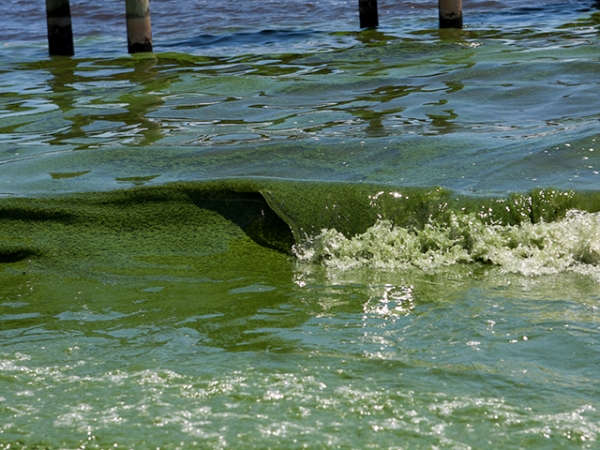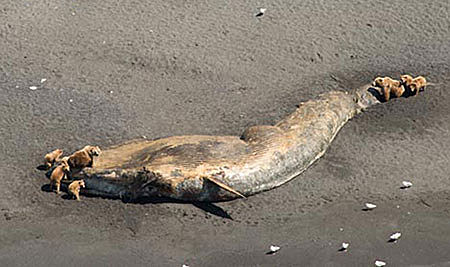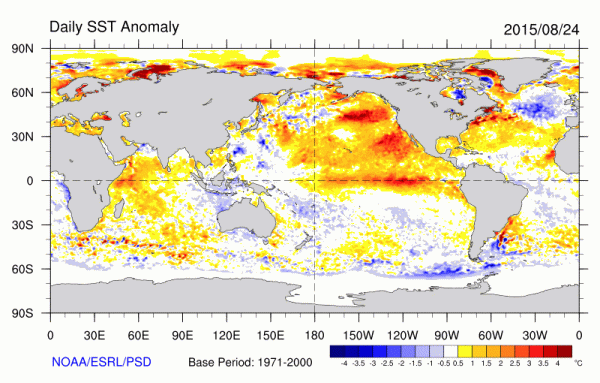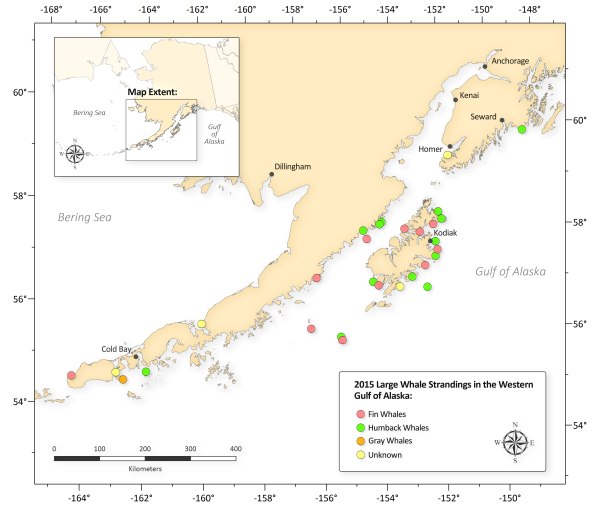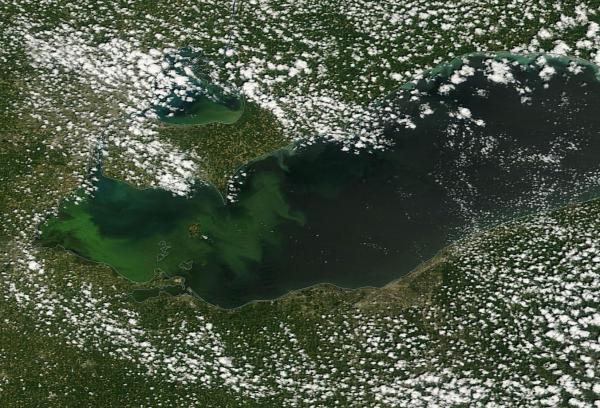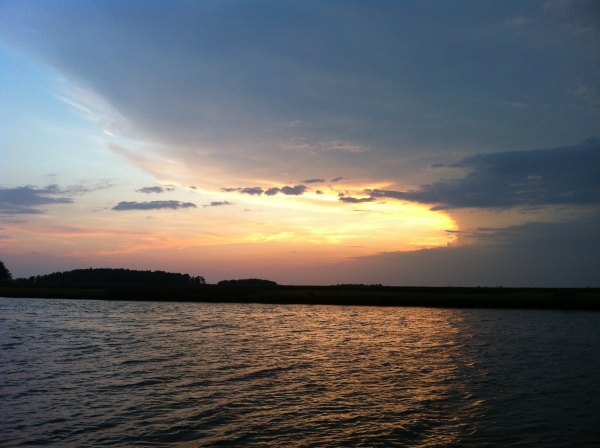More powerful storms. Heavier extreme rainfall events. Storms with higher potential energy. These are the result of a human-forced warming of the Earth’s atmosphere. And South Florida finds itself sandwiched between heavier evaporation flows streaming off the Gulf of Mexico, a more volatilely stormy North Atlantic, and large rivers of moisture streaming in from the Southeast Pacific.
(Atmospheric water vapor levels over South Florida during late June of 2016. South Florida sits between numerous heavily laden atmospheric moisture flows. As human forced warming increases evaporation, these moisture flows expand, resulting in heavier rainfall potentials during storms over South Florida. This climate change dynamic is increasing over-topping flood risks for Lake Okeechobee even as the added heat and rainfall run-off enhances the potential for toxic algae blooms like the one now afflicting South Florida. Image source: Earth Nullschool).
And as these moisture-enhanced storms of climate change dump heavier and heavier rains over South Florida’s Lake Okeechobee, the choice appears to be one between flood risk or toxic algae blooms.
*****
Flood Risk Worsens With Climate Change
Lake Okeechobee sits at the heart of South Florida. Covering 730 square miles, the lake is bounded on the north, east, and west by farms. Run-off from these farms streams into the lake, feeding the growth of algae blooms. As the Earth’s atmosphere and ocean warmed due to human greenhouse gas emissions, rainfall events over South Florida have grown more intense. This trend increases run-off from pesticide, phosphorous, and nitrogen rich soils which then swell the lake with these chemicals and compounds — many of which promote the growth of cyanobacteria (or blue-green algae).
The increasingly heavy rains also force lake levels higher. During Winter of 2016, the wettest January in South Florida’s climate record pushed Lake Okeechobee’s water levels to 16.4 feet above sea level by February. November through May is South Florida’s dry season. So abnormally wet conditions during a typically dry period greatly increased flood risk for communities surrounding the lake as South Florida entered its June through October wet season.
Heavy rains have continued through recent months and, in order to mitigate the heightened flood risk, the US Army Corp of Engineers has been pumping large volumes of the run-off enhanced, nutrient-rich waters out of the lake in order to relieve pressure on the Hoover Dike. The Dike, for its part, is a 132 mile system of levees surrounding the lake and preventing its waters from flooding local communities during heavy rainfall events.
(Lake Okeechobee [upper right of frame] and the algae-laden coastal waters of South Florida as seen in this June 26 LANCE MODIS satellite shot.)
Paul Gray, a scientist with Audubon Florida and Lake Okeechobee expert recently noted:
“One big storm would be a bad situation, really bad. We are nearing the heart of the tropical season and the corps knows they are one storm away from levels they are not comfortable with.”
To reduce pressure on the Dike, the Corps likes to keep Lake Okeechobee in a range of 12.5 to 15.5 feet above sea level. This creates a buffer zone to allow for the impacts of unexpectedly strong storms — like tropical cyclones — which can alone produce enough rainfall to push lake water levels between 1-4 feet higher.
At around 18.5 to 19.5 feet above sea level, the Hoover Dike system is under high risk of a breach or of over-topping. An event which would flood thousands of homes and businesses with 1-5 feet of water and generate a serious risk of loss of life.
So this year, with the dry season acting like the rainy season and with the rainy season now underway, the US Army Corps of Engineers has been releasing much larger volumes from the Lake in what some could call a frantic effort to keep water levels there in the safe range. These efforts, as of Thursday, July 7 produced a Lake Okeechobee water level of 14.93 feet — which was at the top edge of the safe zone. But the effort came at the cost of flushing nutrient rich waters into South Florida’s rivers and estuaries.
Mitigate Flood Risk and Toxic Algae Blooms Result
During recent years, heavy use of fertilizers has loaded up farmland soils surrounding Lake Okeechobee with phosphorous and nitrogen. As human-forced climate change has produced more extreme rainfall events over lands surrounding the lake, greater runoff of these nutrient-rich soils and chemicals into the lake has resulted.
Phosphorous levels, which government regulators like to keep in the range of 40 parts per billion in lake waters, has risen to 100 to 200 parts per billion. That’s 2.5 to 5 times the safe allowable level. And as the Army Corps of Engineers ramped up lake water outflows into the St. Lucie and Caloosahatchee rivers during recent months, this influx of high nutrient lake waters helped to spur the large algae blooms now afflicting the region.
John Campbell, a spokesperson for the US Army Corps of Engineers recently noted that people often ask:
“‘Why didn’t you release more water?’ Well, this is what releasing more water looks like.”
Due to the increased water outflows from Lake Okeechobee, high nutrient levels hit river systems warmed to bacterial growth enhancing temperatures by climate change. Cyanobacteria (blue-green algae) populations in these river and estuary systems then exploded. Goo painted waterways green, putrescent mats of algae formed in calmer waters, and airs smelling of rotten eggs wafted up from the suffocating rivers. These explosive and toxic bacterial growths prompted a declaration of a state of emergency by Governor Rick Scott as four South Florida counties were heavily impacted by the algae blooms.
(Toxic algae blooms like this one have resulted in beach closures across South Florida. Human-caused climate change spurs an increasing incidence of such toxic algae blooms by increasing water temperatures, which enhances algae growth, and by spurring more extreme heavy rainfall events — which generates increased nutrient influx into rivers, lakes, and oceans. Image source: Surfrider.)
Directly, cyanobacteria can produce a number of toxins capable of harming animal and human organ systems. Most common toxins are neurotoxins and toxins that impact the gastrointestinal track — particularly the liver. In addition, large blooms can deprive waterways of life-giving oxygen. Such anoxic conditions spur fish kills and mass production of hydrogen-sulfide generating organisms — a powerful toxin which generates the sulfuric rotten eggs smell that many South Florida locations are now reporting.
Indirectly, the blooms are unpleasant, unsightly and result in beach closures. And since the blooms became widespread, South Florida has experienced losses to its tourist industry (see toxic algae chokes business) — one of the biggest revenue producers for the State. Yet one more example of how human-forced warming not only harms the health of the natural world, but also harms human systems that rely on such natural wealth and beauty to function.
(Large algae blooms spurred by rising water outflows from an increasingly flood-stressed Lake Okeechobee resulted in tourism industry losses during the Fourth of July weekend of 2016. However, residents are rightfully concerned over long-term health risks due to the algae blooms. Note that purple water in gaps between the algae as well as reports of ‘rotten eggs’ smell is circumstantial evidence of increasing concentrations of hydrogen sulfide producing bacteria that tends to thrive in the anoxic dead zones produced by the algae. Video Source: CBS Youtube.)
Conditions in Context
The US Army Corps of Engineers is now reducing Lake Okeechobee water outflows in an effort to limit harmful algae blooms over South Florida waterways and estuaries. Outflow levels, as of June 30 were cut by 35 percent. As a result, some of the nutrients feeding algae blooms will be removed from waterways. But it’s questionable if the large algae blooms can be entirely halted by this mitigation.
Warmer than normal temperatures and heavier than normal rains are expected over this region during the coming weeks and months and these conditions will add to bloom promotion even without a larger pulse of water coming from Lake Okeechobee. In addition, reducing water flows from the lake will again push the lake to rise. And that puts South Florida one large storm away from risking an over-topping of the Hoover Levee System.
Climate change, in this context, has therefore put South Florida in a tough bind between worsening algae blooms over its waterways or worsening flood threats from a swelling Lake Okeechobee. A more immediate problem juxtaposed to the longer term risk of sea level rise — a human-forced ocean invasion which could flood the whole of South Florida by or before the end of this Century.
Links:
Why Drain Lake O? One Storm Could Push it Over its Limits.
What is Causing the Toxic Algae Blooms in Florida’s Waterways?
Army Corps to Reduce Lake Outflows Fueling Toxic Algae Blooms
Toxic Algae Chokes Florida Tourist Industry
Hat tip to Colorado Bob
Hat tip to DT Lange



